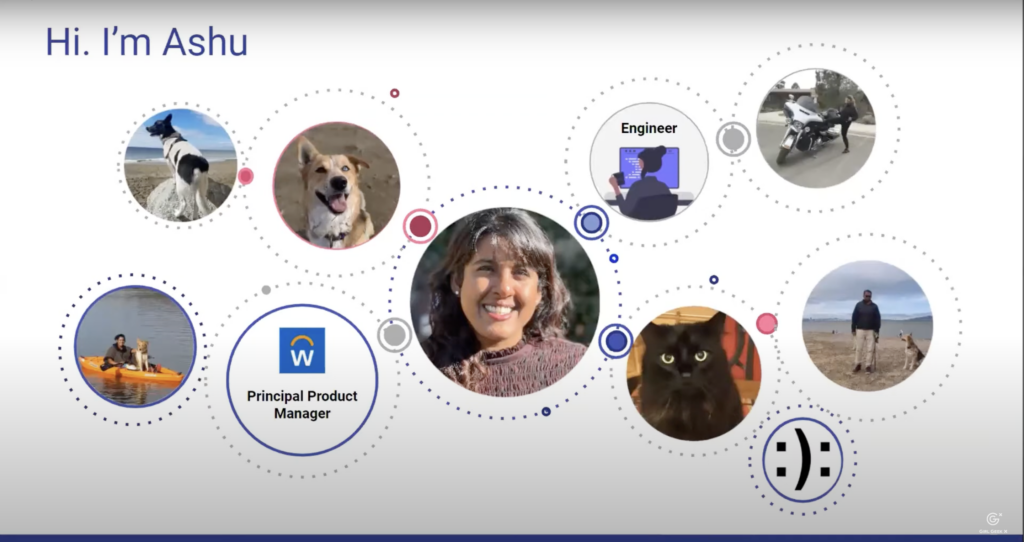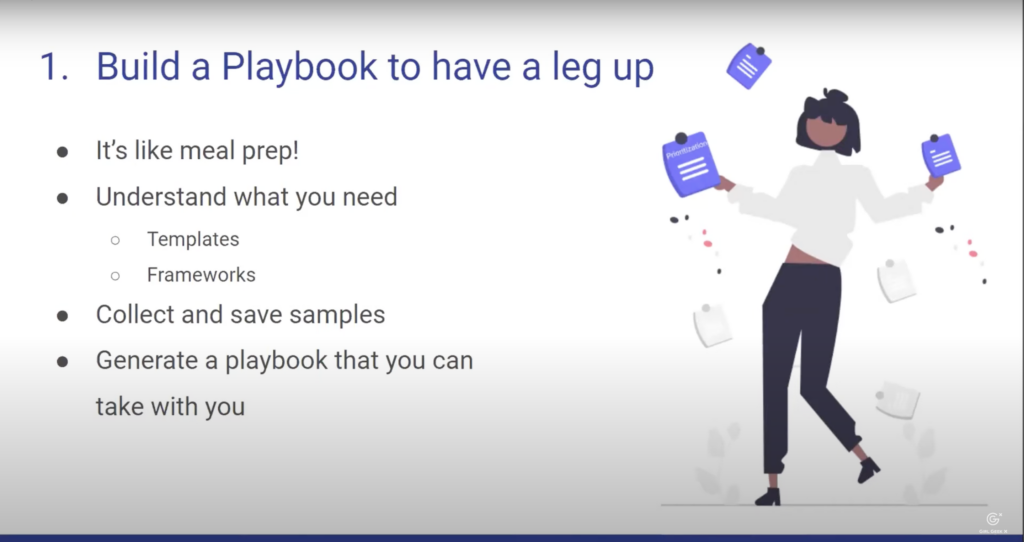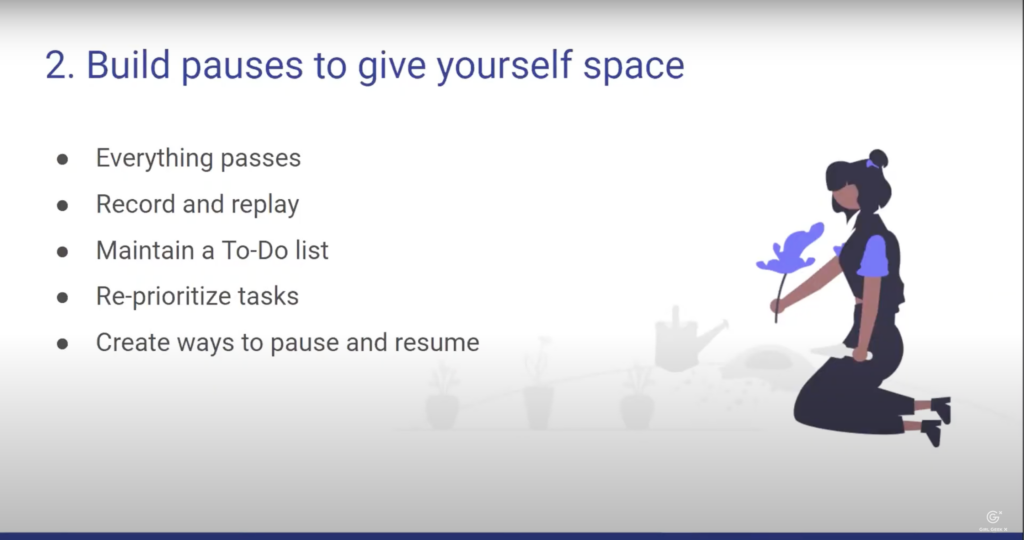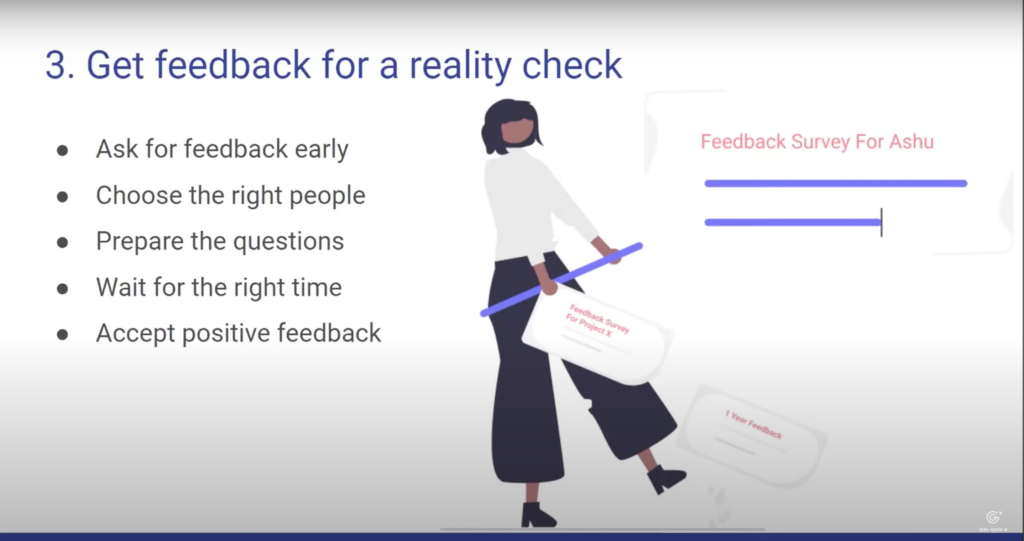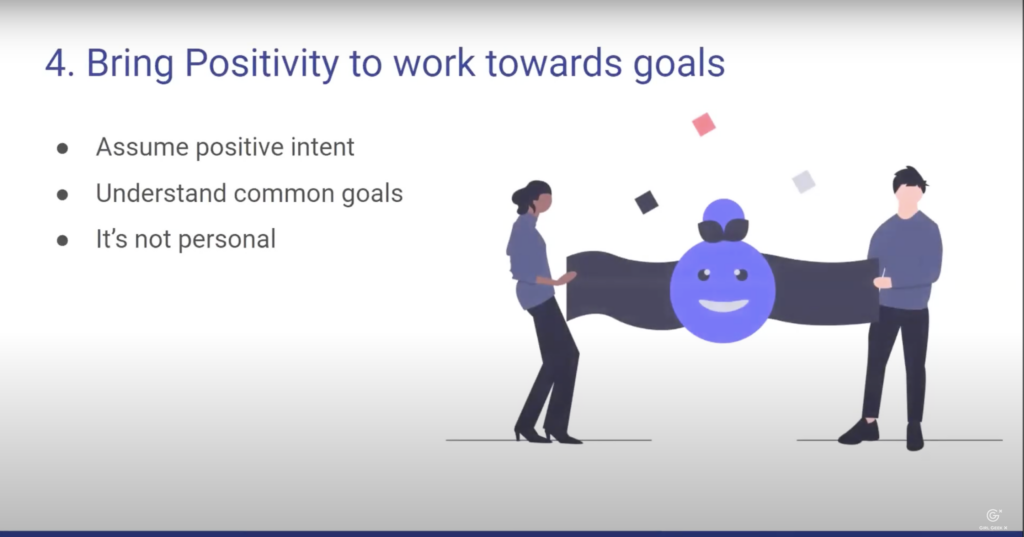Like what you see here? Our mission-aligned Girl Geek X partners are hiring!
- Check out open jobs at our trusted partner companies.
- Watch all Elevate 2022 conference video replays!
- Does your company want to sponsor a Girl Geek Dinner? Talk to us!
Sukrutha Bhadouria: All right over to our next bit, which is our coffee break. We love Atlassian for being our platinum sponsor and hosting a coffee session. This means it’s time for you and I to grab another cup of coffee or chai and join us in welcoming Kristen Warms from Atlassian. She’s here to emphasize how we can support human first experiences at work, redefine what it means to be successful and open the door to tech careers that celebrate and affirm our humanity. Welcome Kristen.
Kristen Warms: Thank you. And thank you so much for having me today. I’m really excited to be here with all of you. We only have 15 minutes together today, but we may have some time at the end for sharing or Q&A.
Kristen Warms: So, please feel free to pop your ahas, ideas or questions in the chat along the way and I will collect those towards the end. I don’t have any slides.
Kristen Warms: So, please feel free if you’ve been looking at the Zoom screen for a while today, to just look away and listen in and rest, give your eyes a break, if you need to, or of course you can keep your eyes on the screen, whatever works for you.
Kristen Warms: My hope is that you’ll leave today’s session feeling a little bit more grounded and hopefully a lot more connected to yourself. So, let’s talk about work and more importantly, how we maximize the meaning we create through it.
Kristen Warms: Our work lives provide some of the most formative experiences and relationships that we have. At work on our best days, we feel fulfilled, productive, on fire, but it’s also where we can get triggered and our insecurities pop up and we have to deal with toxic social conditioning and all sorts of things.
Kristen Warms: Because we spend so much of our time at work, I think it’s really critical that we look at it and it’s placed in our lives differently because there really isn’t a work self and a home self, there’s just you, a whole person.
Kristen Warms: Work is, but one part of the tapestry of our lives and we get to decide what and how we find meaning in it, how we use the lessons that we learn there to better ourselves.
Kristen Warms: And then critical to this, is to allow yourself to be a whole human, complex, messy, lovely, unique, feisty, whatever you are and just remember that having complex emotions at work is both normal and totally okay.
Kristen Warms: I spent a lot of years stifling myself because I was trying so hard to be put together all the time. And as you can imagine, that’s a straight shot to burnout city because, half of my days were spent pretending not to be something I am, a complex person with feelings.
Kristen Warms: So, after reading lots of books, therapy and talking with far wiser friends, I began to understand that my emotions are really guideposts and they provide information that I get to use to learn more about myself.
Kristen Warms: Ultimately our feelings and our emotions and responses at work, shine a light on where we need to go, what is important to us and what we really need to thrive.
Kristen Warms: I was just talking to my husband this morning about that old adage, maybe you’d heard it of bloom where you’re planted and I just, I don’t think that’s true. Some plants just don’t do well in the desert. Some plants don’t do well in the rainforest.
Kristen Warms: We’re all unique, we need different things to be our best selves. So, put another way, when we think about what happens at work, we can use, [inaudible], as tools to help cultivate our own self-awareness.
Kristen Warms: I think the more we acknowledge and honestly celebrate the fullness of who we are, the more we can not only show up to work with more energy and vitality, but make work, work for us.
Kristen Warms: The other part of changing the way that we think and talk about career growth is, I’m sorry. The other way about changing the way we think is to how we talk about career growth, there we go.
Kristen Warms: When I started my career, I really thought there was only one way to do work. And that was to achieve, achieve, achieve. That way of thinking resulted in me, putting a lot of my self-worth in other people’s hands. “Did my boss think I measured up? Did my department give me the best grading? Did my peers give me good feedback at year end?”
Kristen Warms: And I quickly forgot what was important to me. I ended up taking roles that of course, got me that promotion or did that thing for my resume, but ended up making me completely miserable.
Kristen Warms: I had lost my sense of agency. And if you remember nothing else from what I say today, I hope that you remember this.
Kristen Warms: You always have a say. You always have a choice in how you react, how you respond, how you design your life, because at the end of the day, it is your life.
Kristen Warms: But that’s really easy to forget, especially because when we talk about our careers, it’s usually in very goal oriented terms.
Kristen Warms: How many of you talked about smart goals? How many of you have to do long winded performance review processes? Where it’s very much, what did you do? Who are you at work? What did you produce accomplish, achieve?
Kristen Warms: And obviously inherent in those conversations, we’re really talking about ourselves on these as if we exist on these linear planes. And that our worth is completely tied to exactly how quickly you got from point A to point B on that path.
Kristen Warms: And I really want to challenge all of us today to stop thinking like that, because that’s not really how it works.
Kristen Warms: I like to think about my career like a buffet and, stick with me on this one. But, there are going to be years where maybe you just need to eat all the wings. You just need something that feels good and comforts you.
Kristen Warms: That project that you can do in your sleep, because it just, is easy and you need the win and it fills you up, but maybe doesn’t challenge you. But maybe the next year you eat all the veggies because you’re ready to flex. And that promotion is in reach and you can taste it. And you know that it’s there and you know you want to run for it.
Kristen Warms: At the end of the day, these choices, both the slow down and the periods of flex are completely valid. Both nourish you just in different ways because we’re humans and we need different things from work and life, at different times.
Kristen Warms: Once we start to view our career growth with less rigidity, it allows us to see them myriad ways in which our talents and skills show up. And then, we can have careers that unfold more naturally with more fulfillment.
Kristen Warms: And really, I think that serve us better. That really speak to who we are uniquely as people, what we’re good at, what we like to do, what inspires us. And frankly, we can be far more self-compassionate as a result.
Kristen Warms: When we let ourselves off the hook, we make decisions based on what we love to do, not what we think we should do. In turn, at least from my experience, when I changed the way that I thought about work, it changed the way that I interacted with my coworkers, because I was giving myself more grace.
Kristen Warms: I was then able to give it to others. And how many of you have had those moments where you’re feeling really uptight and every little slip feels like the worst and you see every other person’s little slip. And that feels like the worst.
Kristen Warms: It’s really kind of moving past that. So, we can all just be a little bit less perfect. A lot of my work right now, I feel really lucky about my job, to be honest with you, because it’s work that I love to do, but it’s focused on helping build people up, particularly those who are new in their careers.
Kristen Warms: So, I spend a lot of time helping young people enter their working lives, feeling like the best fullest versions of themselves. And I get to remind them of the grace and self-compassion that’s required to navigate something new. And I think inherent in that, I get to remind myself of that a little bit too.
Kristen Warms: Most of the folks who are coming through the program that I run at Atlassian are Gen Z now. And honestly they have a really different view on work and working. I think they bring more openness about their needs and ways of working and in working with them, I’ve learned a lot about how people can approach the same skill from a totally different angle and still be really good at it.
Kristen Warms: I was recently talking with a colleague of mine and they identify as neuro divergent and they were mentioning to me that it’s really hard for them to do that, this Zoom face-to-face thing, it makes them uncomfortable.
Kristen Warms: But when they are given the opportunity to put their communication in writing, their words just take flight. It’s really amazing and powerful for them to express themselves in a way that makes sense for them.
Kristen Warms: So, while we have an expectation that folks at their level are effective communicators, we are giving them this space to figure out how to demonstrate that skill in a way that really makes the most sense to them. And then they crush it.
Kristen Warms: I suspect that a lot of us on this call are probably in management or leadership roles, even if informally. And so what I’ve learned over the years, especially in working so closely with this newest generation entering the workforce, is this.
Kristen Warms: First, when we let people at a problem from their best place, we get a far more creative and imaginative solution. I think we get a fuller picture of the possibilities that could be, not just kind a one narrow definition.
Kristen Warms: And then secondly, we can learn a lot from them. I think, well, I’ll say speak for myself. Sometimes my ego gets in the way, right? I allow my drive to succeed, and it keeps me from that vulnerability that’s required from learning something new, especially when it’s from learning from someone who’s younger than me.
Kristen Warms: But really, the more I open myself up to and allow room for different ideas and ways of working, the better my team does, the better our products are, the better that the solutions we create serve the people they’re created for.
Kristen Warms: So really I think it’s about changing the lens, especially when we change the way that we define success, right? And making that definition broader. So it works for more people.
Kristen Warms: I think this is particularly critical in tech. My team actually talks a lot about how we are going to go about more opportunities for folks that don’t follow what would be potentially considered a traditional path.
Kristen Warms: So go to college, get an internship, get a job, right? There’s tons of talent out there that doesn’t follow that structure, that linear path, as I mentioned before.
Kristen Warms: When we stop putting these false parameters out there and realizing that talent shows up in many forms, we actually can create more inclusive companies, and we can make tech a more inclusive industry.
Kristen Warms: Ultimately though, it’s about giving ourselves permission. Permission to experience work from our full humanity. Permission for others to do the same.
Kristen Warms: When we change the way that we think about work, we change the way we make decisions, and we change the way we set the bar. And at the end of the day, we get to change our lives.
Kristen Warms: So thank you for hanging in there with me and listening. I’d love to pop over to the chat now and just see what you guys are sharing and saying. I saw so many things coming through. I was trying to focus and not get distracted, so. Awesome. Awesome. I’m so glad. I’m so glad.
Kristen Warms: It sounds like lots of folks are really jiving with what I’m saying. So I appreciate that. Yeah. Picking up the phone and calling each other. Angie, I love that too. Right?
Kristen Warms: Shannon, you mentioned taking cameras off days. I love that. That is such a good idea. Especially when you’re feeling exhausted. It’s hard. It’s hard to be on Zoom and feel like you have to be on all the time. So, excellent, Shannon. I love that idea.
Kristen Warms: Yep, Tracy. Yes. Appreciate people who, who are open about their needs at work. It takes a lot of courage to do that. So we got to give people props when they do it and give ourselves props when we do it too. Hey, Angie, I see that you’re on, is that my curtain call?
Angie Chang: I just want to say thank you so much for that reinvigorating talk that you just gave us!
Like what you see here? Our mission-aligned Girl Geek X partners are hiring!
- Check out open jobs at our trusted partner companies.
- Watch all Elevate 2022 conference video replays!
- Does your company want to sponsor a Girl Geek Dinner? Talk to us!


